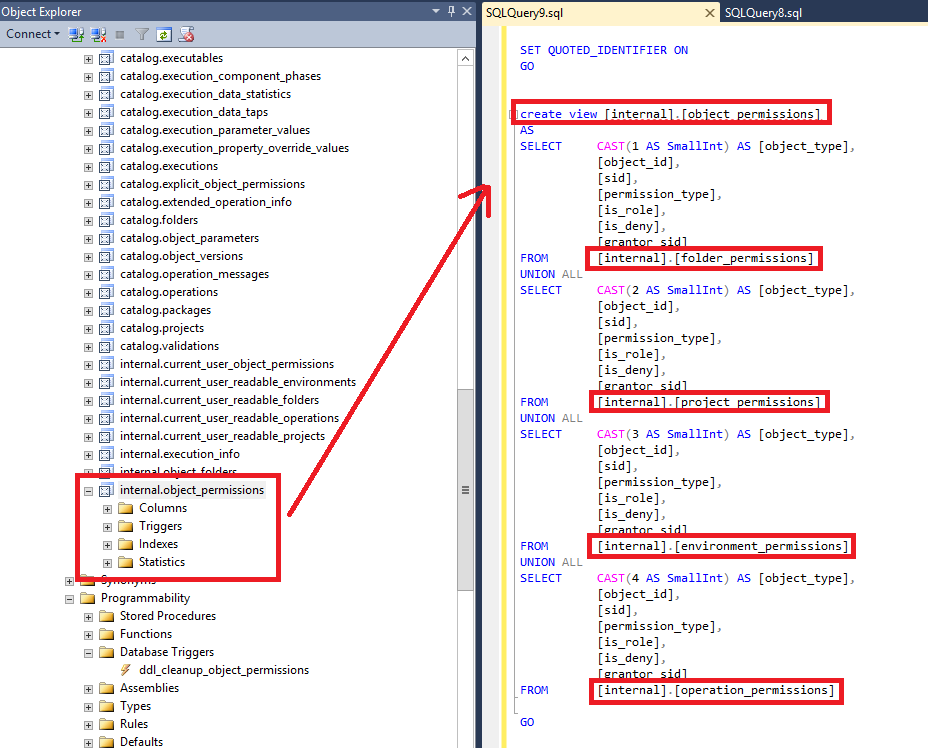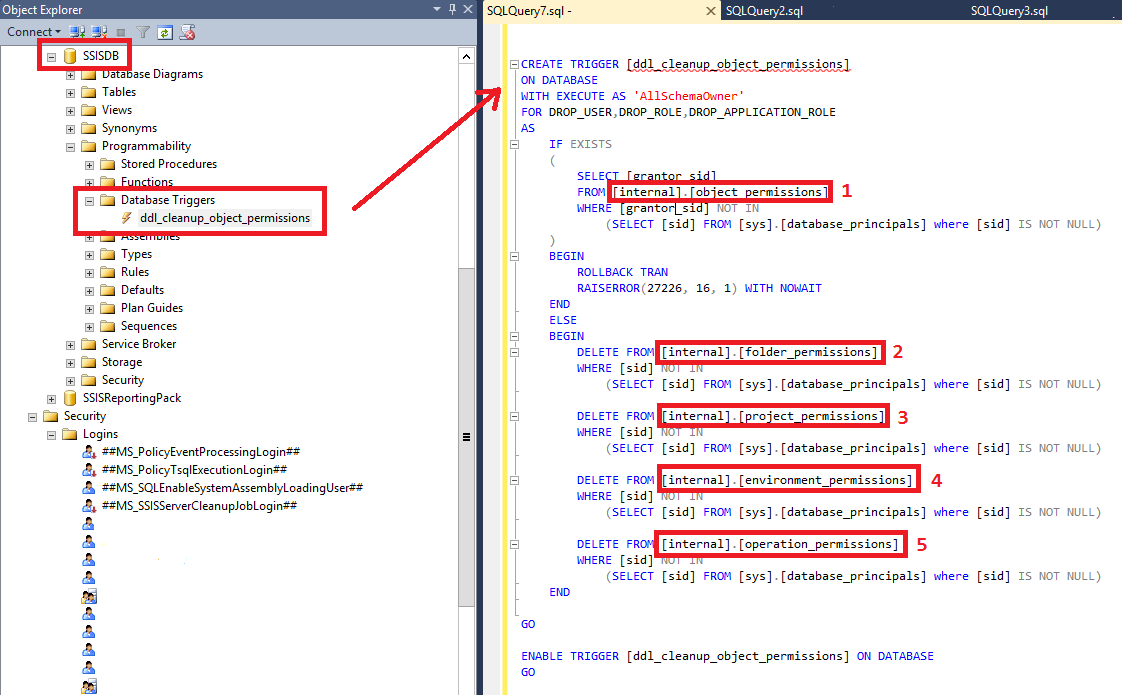I post a little tips for orphan database-users that we cannot drop so easily in the SSISDB…
I discovered this by a customer and it was very tricky to find the explanation and the solution.
This is the reason why I will share it with you…
CONTEXT
All morning, a policy checks orphan database user on all databases from all instances through the Enterprise Policy Management (EPM) Framework.
If the number of orphan database user is more than 0, I have a failed policy per databases…
For information, an orphan database user is a database user with no link to a login.
Few weeks ago, I have installed a dedicated server for SSIS with the database SSISDB and this week, the policy failed.
To check if a user is orphan, I run the script from the policy:
SELECT * FROM sys.database_principals a
LEFT OUTER JOIN sys.server_principals b ON a.sid = b.sid
WHERE b.sid IS NULL AND a.type In ('U', 'G') AND a.principal_id > 4
The result is one user-database:
Name: dbi\orphan_user
Type_desc: WINDOWS_USER
Default_schema_name: dbo
…
And now, I will delete the orphan database user with the classical DROP command:
USE [SSISDB] DROP USER [dbi\orphan_user] GO
But I haven’t a good result for my query 🙁
I receive an Error:
Msg 27226, Level 16, State 1, Procedure ddl_cleanup_object_permissions, Line 16
The database principal has granted or denied permissions to catalog objects in the database and cannot be dropped
Msg 3609, Level 16, State 2, Line 1
The transaction ended in the trigger. The batch has been aborted.”
STEP 1
The first Step to analyze this error is to see the trigger “ddl_cleanup_object_permissions” from the Error message:
As you can see on the picture, you have in the trigger, 5 views/tables:
- [internal].[object_permissions] –> view
- [internal].[folder_permissions] –> table
- [internal].[project_permissions] –> table
- [internal].[environment_permissions] –> table
- [internal].[operation_permissions] –> table
[internal].[object_permissions] is a view created with the 4 tables [internal].[folder_permissions], [internal].[project_permissions], [internal].[environment_permissions] and [internal].[operation_permissions] linked by ‘UNION ALL’ commands

I will search what permissions have this user.
I create this script to have a view between the Object Type (folder, project, environment or operation), permission associated and the user name:
SELECT CASE (ObjPerm.object_type)
WHEN 1 THEN 'folder'
WHEN 2 THEN 'project'
WHEN 3 THEN 'environment'
WHEN 4 THEN 'operation'
END AS [object_type],
CASE (ObjPerm.permission_type)
WHEN 1 THEN 'READ'
WHEN 2 THEN 'MODIFY'
WHEN 3 THEN 'EXECUTE'
WHEN 4 THEN 'MANAGE_PERMISSIONS'
WHEN 100 THEN 'CREATE_OBJECTS'
WHEN 101 THEN 'READ_OBJECTS'
WHEN 102 THEN 'MODIFY_OBJECTS'
WHEN 103 THEN 'EXECUTE_OBJECTS'
WHEN 104 THEN 'MANAGE_OBJECT_PERMISSIONS'
END AS [permission_description],
Princ.Name AS [database_user_name]
FROM [internal].[object_permissions] ObjPerm
JOIN sys.server_principals Princ
ON ObjPerm.sid = Princ.sid
WHERE Princ.Name='dbi\orphan_user'
ORDER BY [object_type] DESC,[database_user_name],[permission_description]
In this case, I have no result…
STEP 2
The second step is to verify the specific object permission tables with this script:
/*Folder Permissions*/ SELECT fo.*,p.name FROM internal.folder_permissions fo INNER JOIN sys.database_principals p on fo.[sid] = p.[sid] WHERE p.name = 'dbi\orphan_user' /*Project Permissions*/ SELECT pr.*,p.name FROM internal.project_permissions pr INNER JOIN sys.database_principals p on pr.[sid] = p.[sid] WHERE p.name = 'dbi\orphan_user' /*Environment Permissions*/ SELECT en.*,p.name FROM internal.environment_permissions en INNER JOIN sys.database_principals p on en.[sid] = p.[sid] WHERE p.name = 'dbi\orphan_user' /*Operation Permissions*/ SELECT op.*,p.name FROM internal.operation_permissions op INNER JOIN sys.database_principals p on op.[sid] = p.[sid] WHERE p.name = 'dbi\orphan_user'
Only one return a result. In this case, it is the query with internal.operation_permissions.
I can deduct that I have some “ghost rows” in this table.
STEP 3
The third step is to delete these “ghost rows” but before don’t forget every time to back up the database SSISDB.
The ugly step is now to delete all rows in the internal.operation_permissions with the orphan user ‘dbi\orphan_user’ I use the sid from the user to delete it
DELETE internal.operation_permissions WHERE sid = 0x01050000000000051…
Logically, if you have others rows in the other object types, you can also delete rows.
The last step is really to drop the database user and now, it works!

![Thumbnail [60x60]](https://www.dbi-services.com/blog/wp-content/uploads/2022/08/STH_web-min-scaled.jpg)
![Thumbnail [90x90]](https://www.dbi-services.com/blog/wp-content/uploads/2022/08/DWE_web-min-scaled.jpg)